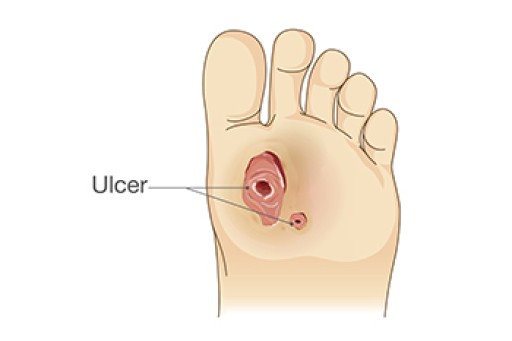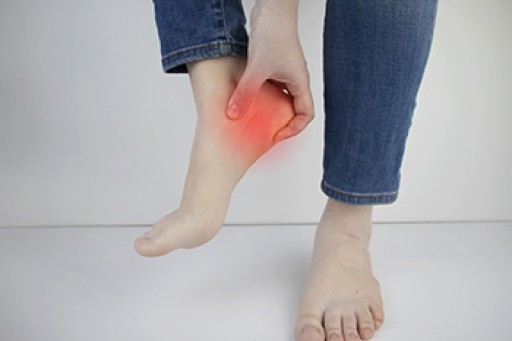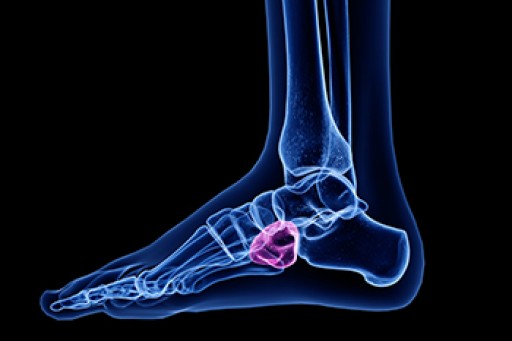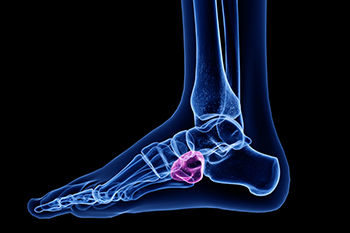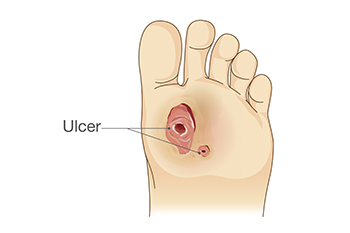
A diabetic foot ulcer is an open wound or sore that develops on the feet of individuals with diabetes. High blood sugar levels can damage nerves and blood vessels, leading to reduced sensation and poor circulation, which makes it harder for wounds to heal. Symptoms include redness, swelling, pain, and sometimes drainage or foul odor. Proper treatment is essential to prevent complications, such as infections or even amputation. Early care includes cleaning the ulcer, applying topical medications, and wearing special footwear to reduce pressure. In more severe cases, debridement, which is the removal of dead tissue, or surgery, may be necessary. A podiatrist plays a critical role in treating diabetic foot ulcers by providing wound care, recommending custom footwear, and monitoring the healing process. If you have diabetes and notice any foot sores or ulcers, it is suggested that you promptly schedule an appointment with a podiatrist to prevent serious complications.
Diabetic foot care is important in preventing foot ailments such as ulcers. If you are suffering from diabetes or have any other concerns about your feet, contact one of our podiatrists from Carolina Foot & Ankle Specialists. Our doctors can provide the care you need to keep you pain-free and on your feet.
Diabetic Foot Care
Diabetes affects millions of people every year. The condition can damage blood vessels in many parts of the body, especially the feet. Because of this, taking care of your feet is essential if you have diabetes, and having a podiatrist help monitor your foot health is highly recommended.
The Importance of Caring for Your Feet
- Routinely inspect your feet for bruises or sores.
- Wear socks that fit your feet comfortably.
- Wear comfortable shoes that provide adequate support.
Patients with diabetes should have their doctor monitor their blood levels, as blood sugar levels play such a huge role in diabetic care. Monitoring these levels on a regular basis is highly advised.
It is always best to inform your healthcare professional of any concerns you may have regarding your feet, especially for diabetic patients. Early treatment and routine foot examinations are keys to maintaining proper health, especially because severe complications can arise if proper treatment is not applied.
If you have any questions please feel free to contact our offices located in Mount Pleasant and Charleston, SC . We offer the newest diagnostic and treatment technologies for all your foot and ankle needs.
